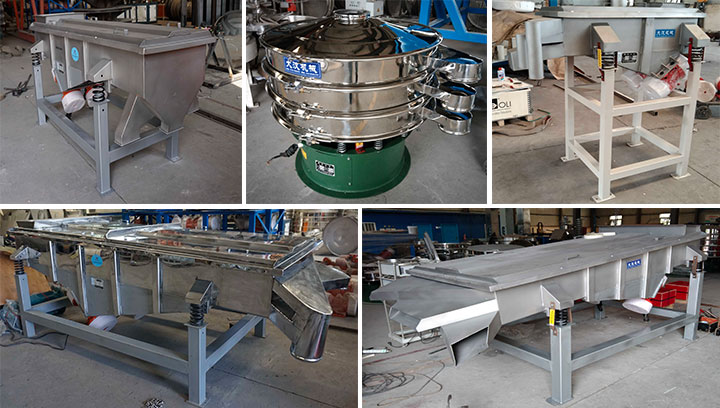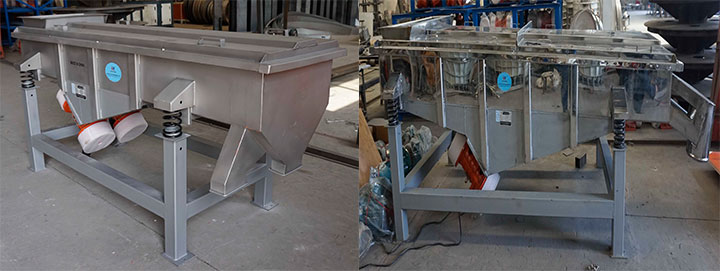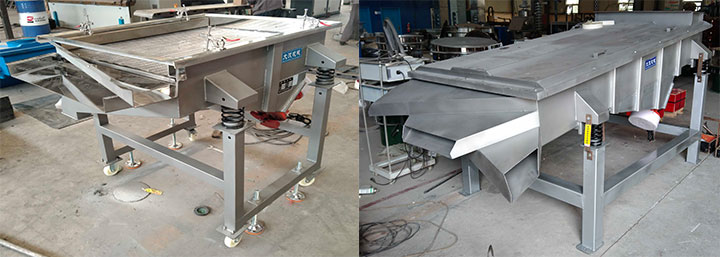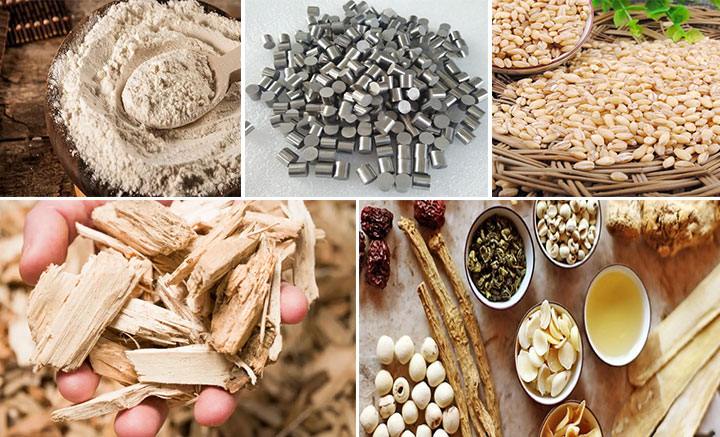A 2-layer Sifter Machine is a common device for classifying and removing impurities from powders and granular materials. Its core component is a two-layer stainless steel screen, typically made of 304 or 316L stainless steel, which is wear-resistant, corrosion-resistant, and non-deformable. The screen aperture can be customized to meet process requirements, generally ranging from 2 mm to several tens of microns, enabling screening from 10 to 500 mesh. Typical applications include flour screening, pharmaceutical powder impurity removal, metal powder classification, ceramic powder iron removal, and resin particle sorting. Screening output depends on the material characteristics and screen mesh size. Small-scale equipment can typically process 100 kg to 1 ton per hour, while large industrial models can reach several tons. It can meet the needs of high-precision screening or large-scale continuous operations and is suitable for automated production scenarios requiring multi-stage sorting.
The 2-layer Sifter Machine works by using a motor to generate high-frequency vibrations, causing the material to toss and roll on the screen surface, thereby discharging particles of different sizes in layers: larger particles are retained on the upper screen, medium-sized particles are screened on the second screen layer, and fine powder is discharged from the lower outlet.

Common 2-layer Sifter Machine equipment includes linear vibrating screens and rotary vibrating screens. Linear vibrating screens include models: DZSF-410, DZSF-520, DZSF-1025, DZSF-810, DZSF-1025, DZSF-1230, and DZSF-1530. Rotary vibrating screens include models: DH-400, DH-600, DH-1000, DH-1500, and DH-2000. DZSF-410 indicates a linear vibrating screen with a screen width of 410 mm, while DH-400 indicates a rotary vibrating screen with a screen diameter of 400 mm. The equipment image is as follows:
Using a 2-layer Sifter Machine offers significant advantages in terms of efficiency, output, grading performance, structure, and applicability.

First, in terms of efficiency, the two-layer screening structure enables simultaneous screening of two levels, allowing materials of varying particle sizes to be obtained with a single feed, reducing repeated screening steps and significantly improving overall operational efficiency. Second, in terms of output, the double-layer screen increases the effective screening area, ensuring more even distribution of material across the screen surface, improving processing capacity, and enabling higher output per unit compared to single-layer equipment.
In terms of grading performance, the double-layer screening system can simultaneously separate coarse, medium, and fine materials, resulting in finer grading and more accurate particle size differentiation, making it particularly suitable for industries with stringent particle size requirements. Regarding structural advantages, the equipment is typically driven by a vibrating motor, resulting in a compact structure and a small footprint. The double-layer screen design allows for flexible replacement, facilitating maintenance, and features improved features to prevent clogging and mixing.
In terms of applicable materials, the Sifter Machine 2-layer is suitable not only for powdery materials such as flour, starch, grain, and feed, but also for granular or powdered materials such as chemical raw materials, resins, and metal powders. By combining screens with different mesh sizes, it can meet the grading needs of various industries.

When selecting screens for the Sifter Machine 2-layer, consider the material, mesh shape, and mesh size.

Different screen materials have different properties and are suitable for different applications. Stainless steel wire mesh offers corrosion and high-temperature resistance, making it suitable for use in industries such as food, chemicals, and pharmaceuticals. Nylon screens offer excellent elasticity and light weight, making them a suitable choice for screening lightweight powders or granules. Polyurethane screens offer excellent wear resistance and are particularly effective when handling coarse particles or highly abrasive materials.
Mesh shape selection: Square meshes are suitable for screening general granular materials due to their excellent flowability, ensuring smooth material flow. Round meshes are suitable for fine screening, minimizing particle jamming. Rectangular or wedge-shaped meshes are more suitable for grading specific particles or for screening designs requiring anti-clogging.
The mesh size of the sieve determines screening accuracy. Typically, a 10-40 mesh coarse screen is used on the upper layer, while a 40-100 mesh fine screen is used on the lower layer, suitable for sand, gravel, and grain. For fine screening, a 40-100 mesh upper layer and a 100-200 mesh lower layer are used to meet the requirements of flour and milk powder. For ultrafine screening, a 100-200 mesh upper layer and a 200-400 mesh lower layer are used to meet the requirements of pharmaceutical and chemical powders.
Typical applications of a 2-layer Sifter Machine are primarily for material screening, grading, impurity removal, or dehydration. The following are typical application scenarios:

Food Industry: During food processing, flour, starch, and rice flour must be free of impurities and lumps to ensure a uniform and fine powder. Sugars require screening to remove lumps and impurities to ensure product quality. Dried fruits and nuts require sizing to separate particles and remove broken pieces and foreign matter.
Chemical Industry: Chemical powders such as titanium dioxide, activated carbon, and pigments require particle size classification. Additives also require sieving to remove impurities to ensure product purity.
Mining and Metallurgy: Mineral powders and sand and gravel require particle size classification to improve subsequent processing efficiency. Metallurgical powders require sieving to remove impurities and sizing to ensure quality during smelting or pressing.
Pharmaceutical Industry: Traditional Chinese medicine and Western medicine powders require sieving to achieve a uniform particle size and remove impurities to ensure consistent efficacy.
Plastics and Building Materials Industry: Plastic granules require sizing to ensure uniformity. Cement and stone powders require sieving to remove impurities and sizing to improve product quality.
Other Applications: In the environmental protection industry, screening technology is used for sludge dewatering and grading after garbage shredding; in agriculture, it is used for grain and seed screening.
The Sifter Machine 2 layers utilizes a double-layer screen and high-frequency vibration to achieve efficient, multi-level, and precise material grading and impurity removal. The double-layer screening structure simultaneously separates coarse, medium, and fine particles, ensuring uniform particle size and accurate grading, improving operational efficiency and output. The device boasts a compact structure and easy maintenance. The screen material and aperture can be flexibly selected based on material characteristics. It offers wear-resistant, corrosion-resistant, and anti-clogging properties to meet diverse production needs. Whether handling powders, granules, or fine materials, the device operates stably and continuously, improving production efficiency and product quality while reducing labor costs and secondary screening steps. Its high adaptability and flexible configuration make it a crucial tool for high-precision grading, impurity removal, and automated production in industries such as food, chemicals, pharmaceuticals, and mining.
Address:China,Yanjin county forest park gate to the west 1000 meters north road.